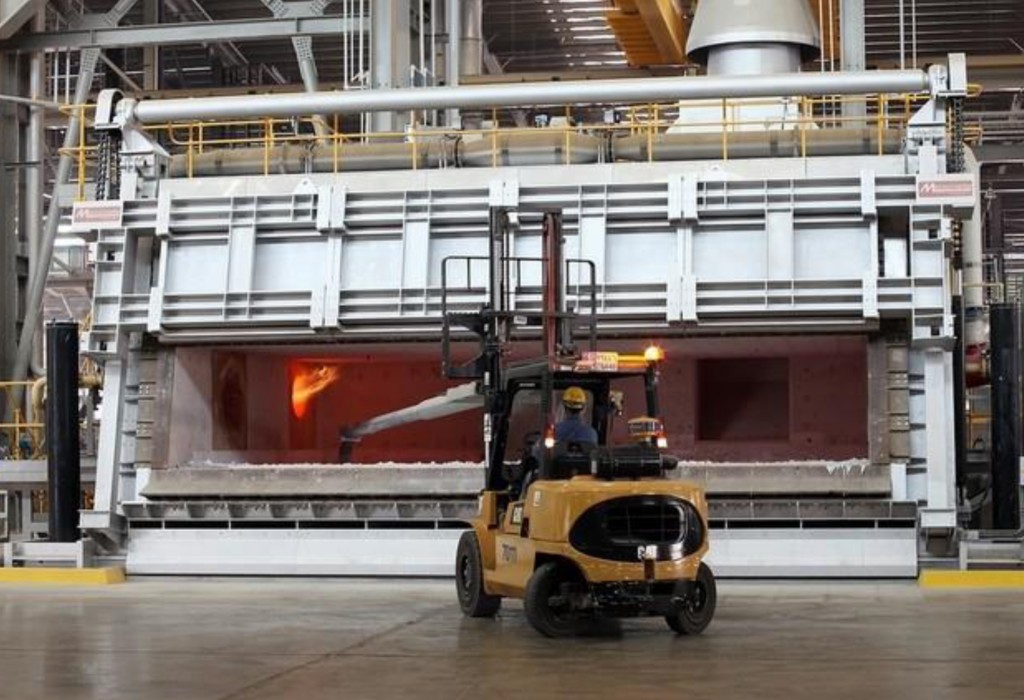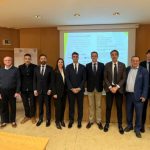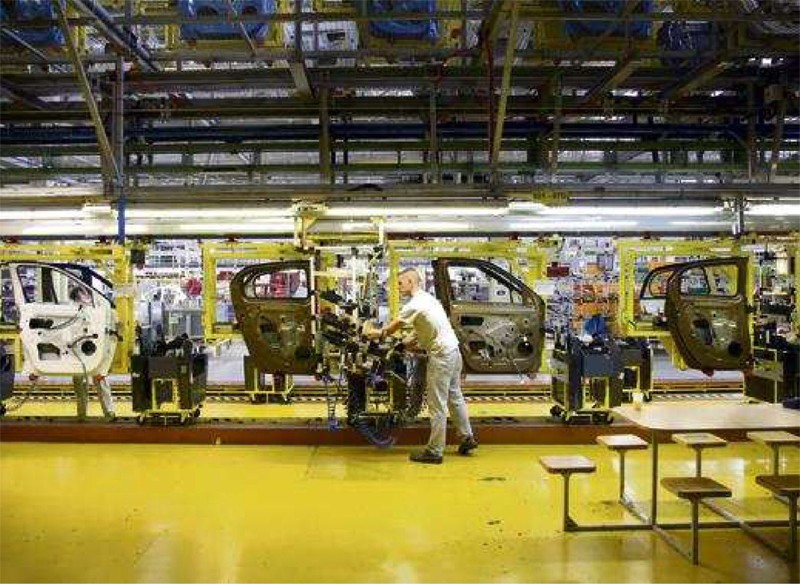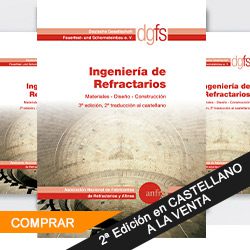Le sidérurgiste vient d’annoncer une perte record de près de 8 milliards de dollars. La compétitivité de la production européenne d’acier pose plus que jamais question. Le président d’ArcelorMittal France, Philippe Darmayan, estime que le secteur est menacé si les autorités européennes ne réagissent pas rapidement. L’objet de toutes les crispations: la Chine.
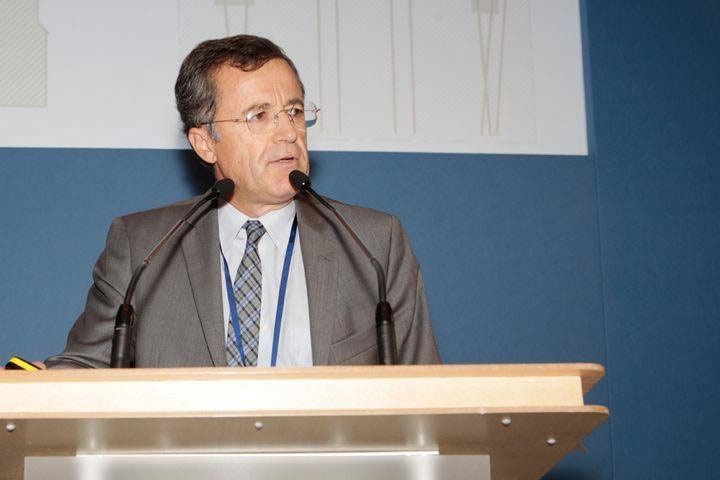
Comment expliquer la perte de 8 milliards de dollars annoncée par ArcelorMittal?
Philippe Darmayan. Elle est due essentiellement à une dépréciation de nos actifs. Sur les 7,9 milliards de pertes annoncés, 4,8 sont dues aux dépréciations, surtout dans le secteur minier, et le reste à des charges exceptionnelles liées à la perte de valeur des stocks en raison de la chute des prix de l’acier. La situation du marché est très critique. La Chine accuse 300 millions de tonnes de surcapacités de production d’acier, sur une production de 800 millions de tonnes. Des chiffres à comparer à la capacité européenne qui s’élève à 150 millions de tonnes et celle des Etats-Unis à 120 millions de tonnes. Cette situation de surcapacités s’explique par le fait que les Chinois ont tablé sur une base de croissance de 10% et que depuis un an, l’économie chinoise est à l’arrêt dans l’acier. De ce fait, une partie de la production d’acier ne trouve pas d’utilisateur sur le marché. La croissance européenne du secteur, comprise entre 1 à 2% en 2015, a été complètement absorbée par la croissance des exportations de la Chine en Europe.
Quel est le niveau des importations d’acier chinois?
Les importations ont cru de 25% entre 2014 et 2015. Avec, comme corollaire, une baisse des prix de l’acier chinois sur le marché européen, auquel s’est ajoutée la baisse du prix des matières premières. En résumé, la croissance chinoise a eu deux effets. D’abord sur la production d’acier et son prix, puis sur le prix des matières premières. Nous sommes victimes d’une double peine.
Quelles vont être les conséquences sur le développement d’ArcelorMitttal en Europe ? Nous avons la conviction, preuves à l’appui, que les baisses de prix de l’acier chinois résultent de dumping, autrement dit de subventions du gouvernement chinois. Nous sommes en train de mener une action auprès des gouvernements et de la communauté européenne pour mieux surveiller les prix chinois et pour lancer une opération anti-dumping vis-à-vis des Chinois. Aujourd’hui même est publiée une lettre des ministres de l’Economie adressée à la Commission européenne et au Conseil, à laquelle le ministre de l’Economie Emmanuel Macron a largement contribué. Nous demandons à ce que la Chine accepte des conditions concurrentielles acceptables par rapport à l’Europe.
Le secteur dénonce depuis plusieurs années ces pratiques. Pensez-vous être cette fois-ci écouté?
Nous n’avons jamais eu autant de chances d’être écoutés à Bruxelles qu’aujourd’hui grâce à Emmanuel Macron. Concrètement, l’objectif est de mettre en place des taxes qui compensent les anomalies aujourd’hui constatées. Pour le moment, la façon dont fonctionne le marché de l’acier chinois, véritable entreprise d’Etat, n’est pas acceptable. Les droits de douane doivent porter les importations chinoises à l’égal de l’acier européen.
La production d’acier européenne est-elle menacée si aucune décision n’est prise à l’échelle européenne? Oui, on peut dire ça. Je suis de nature optimiste, donc je pense que les mesures seront prises dans un sens satisfaisant. La mobilisation qui va se traduire le 15 février à Bruxelles par une marche des aciéristes et un soutien prononcé des ministres de l’économie va dans le bon sens.
Dans quelle mesure l’acier chinois, bas de gamme, menace-t-il la production européenne davantage positionné dans le haut de gamme ? Nous sommes effectivement protégés sur nos aciers haut de gamme, mais ils ne représentent pas la majorité de nos produits. Vous ne pouvez pas produire uniquement du haut de gamme destiné à des niches de marchés. Le site d’ArcelorMittal de Fos-sur-Mer, par exemple, qui produit du laminé à chaud destiné aux usines de transformation dans le pourtour méditerranéen, est concurrencé par les usines chinoises. Si je cite a contrario l’usine de Dunkerque, elle est moins attaquable du fait du volume de spécialités qu’elle produit.
Avez-vous des inquiétudes quant à l’avenir du site de Fos-sur-Mer ?
Non, je n’ai pas d’inquiétudes. Nous avons déjà dit qu’il pouvait y avoir temporairement des opérations de chômage partiel. Ce que nous n’avons pas mis en oeuvre aujourd’hui. Aussi longtemps que nous pourrons tenir, nous tiendrons. Nous sommes transparents sur cette question de nos problèmes de compétitivité. Nous avons décidé de fermer temporairement notre usine en Espagne de Sestao. Nous n’avons pas décidé aujourd’hui de mesure semblable à Fos-sur-Mer.
Pourquoi avoir vendu vos parts dans Gestamp alors que le marché automobile représente un segment porteur pour l’acier ? C’est une société exceptionnelle spécialisée dans l’estampage, cliente d’ArcelorMittal depuis longtemps. Nous avons des projets commun de R&D, comme d’ailleurs les procédés d’estampage de l’Usibor. Mais Gestamp n’est pas dans le coeur de notre activité. Nous conservons toutes nos relations en termes de recherche et développement. Cette entreprise reste un de nos partenaires privilégiés, mais nous devons nous désengager pour poursuivre notre objectif de baisser le niveau de l’endettement.
Malgré la croissance continue du groupe depuis dix ans, vous faites face à une situation difficile. Comment l’expliquer?
Le milieu de l’acier est très déconcentré. Ces vingt dernières années, il s’est déconcentré encore davantage avec la croissance de la Chine. Tous les acteurs de l’acier font face au même problème de surcapacités. Nous avons d’une certaine façon commencé à régler le problème en diminuant les surcapacités européennes, avec nos opérations de fermeture de sites à Liège, en Belgique, et à Florange, en Moselle. Nous avons conservé nos hauts-fourneaux européens les plus compétitifs pour être capables de concurrencer la Chine. Rappelez-vous qu’au début de l’année 2015, la situation était assez favorable pour l’acier. La situation n’a changé que depuis le milieu de l’année.
Alors que Nippon Steel augmente ses parts dans Vallourec, ne craignez-vous pas de vous faire rattraper par certains de vos concurrents en raison de votre forte dette ?
Vallourec est sur le marché du pétrole dont la problématique est différente. Pour revenir à ArcelorMittal, la direction du groupe a pris les devants pour à la fois diminuer la dette nette en décidant une augmentation de capital de 3 milliards de dollars et pour améliorer la compétitivité et restaurer les résultats du groupe en lançant le plan Action 2020.
Vous comptez investir encore en Europe ou au contraire diminuer les capacités de production?
La stratégie sur l’Europe est de continuer à faire de la R&D, de fabriquer des produits qui correspondent aux besoins des industriels de l’économie verte, comme des aciers toujours plus résistants, toujours plus fins.
La réforme du système d’échanges de quotas de CO2, qui entre bientôt dans sa quatrième phase, vous inquiète-t-elle également pour votre compétitivité ? Tout à fait. Cette question fait partie de la lettre envoyée à la Commission européenne. En juillet 2015, la Commission a émis une nouvelle directive pour renforcer ce système, le rendre plus contraignant. Nous avons le sentiment que toutes les industries tournées vers le commerce international seront touchées, du fait que nous n’avons pas en Europe le même niveau d’engagement de réduction des émissions de gaz à effet de serre par rapport à des pays comme la Chine et l’Inde. Une fois de plus, cela crée une distorsion de concurrence. Dès 2017, certains sites européens seront amenés à payer des droits d’émissions de CO2 qui vont les mettre dans des conditions de non-compétitivité accrue par rapport à des sites étrangers concurrents.
La possibilité que la Chine acquière le statut d’économie de marché est-il aussi de nature à vous inquiéter?
C’est un autre sujet délicat. Les autorités chinoises souhaiteraient acquérir ce statut dès 2016, dans le cadre d’accords passés avec l’Organisation mondiale du commerce (OMC). Or les conditions dans lesquelles le business se fait en Chine ne correspond pas aux conditions de fonctionnement de l’OMC. Nous sommes préoccupés. Soit il faut retarder cet accord, soit définir des conditions acceptables. Mais d’une manière générale, il ne faut pas être catastrophiste. Les actions des autorités à Bruxelles me paraissent de nature à répondre à nos préoccupations. La commissaire européenne vient de demander aux chinois de réduire leurs capacités. Ils ont annoncé qu’ils allaient opérer des réductions, de près de 150 millions de tonnes. La situation est bien en train de bouger.
